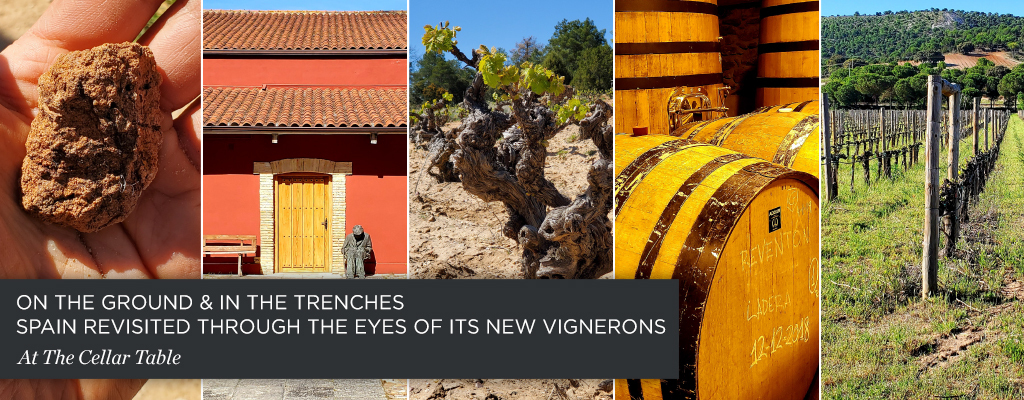
Spain Revisited through the Eyes of its New Vignerons
It had to happen. It was destined to happen. Over the last few years, I went from possessing only textbook knowledge of Spanish wine, with possibly 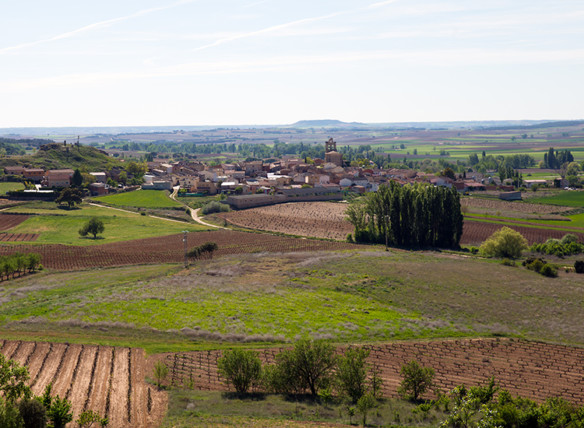 a mixed case in my own cellar, to now being completely enamored with the country, its people, its food, and of course–its wine. a mixed case in my own cellar, to now being completely enamored with the country, its people, its food, and of course–its wine.
It all started two years ago, with a trip that found me in Rioja, Ribera del Duero and Toro. That was the inception point, the moment when I realized that there was so much more to this region than I had realized. The stories behind each location enthralled me. These were not wines produced by grand Chateaux. These wines were rooted in the history of merchants, farmers, and laborers. People who planted vines generations ago, struggling to provide for their families and survive, with wine being used as a commodity or for sustenance.
Even the world-renowned Vega Sicilia shared a history of community and families, with many of their employees being able to trace their roots with 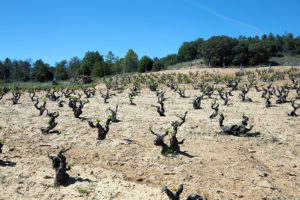 Vega back to the beginning. The fact that these same individuals were working vines that had been planted by generations of their own flesh and blood was astounding to me. Vega back to the beginning. The fact that these same individuals were working vines that had been planted by generations of their own flesh and blood was astounding to me.
However, even while I was on that trip, I felt like there was something more.
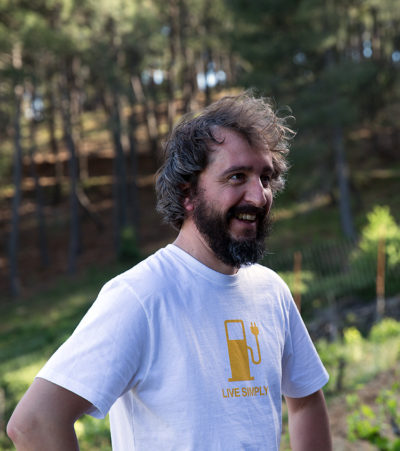 While on a tour through one of Vega’s old vine plots, I saw a road heading up the hillsides, and I asked what could be found at higher elevations. Whether lost in translation, or if things simply changed that fast, the answer was that there was nothing of importance–today, we know better. While on a tour through one of Vega’s old vine plots, I saw a road heading up the hillsides, and I asked what could be found at higher elevations. Whether lost in translation, or if things simply changed that fast, the answer was that there was nothing of importance–today, we know better.
However, it’s not just in Ribera del Duero that we find a wave of inspired winemakers who are seeking out old vineyards and new terroir of tremendous potential. The fact is that all across the country, new projects and small artisanal wineries are constantly exploring, sometimes going as far as Bodegas Comando G in Gredos, where they have used satellite images to locate long-forgotten vineyards. It’s exciting, to say the least, and I knew that I had to return to the country to see for myself. Also, I knew that I had to meet with the people that are changing Spanish wine with every passing day, as well as tour through the vineyards that, until recently, I could only read about.
This year, I got my wish.
After many months of tearing through any piece of literature or online content that spoke about the new vignerons, this May I was actually able to meet 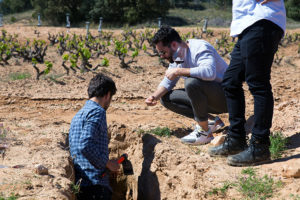 many of them and literally dig in the dirt, or should I say the actual trenches. I kid you not, because this is exactly what the new generation of winemakers are doing; they’re digging trenches (inspired by and with the help of Pedro Parra, a Chilean soil expert) throughout their vineyards to study the change in soil types that often differs drastically within only a few meters. They are also continuing to expand their holdings by rediscovering old vineyards that have been either left untended or used to create a house wine, within small villages scattered throughout Spain’s off-the-beaten-path wine regions. Imagine, if you will, as Jorge Monzon of Dominio del Aguila nurses these old vines back to health and then creates world-class wines from the same vines that only a few years back were being made in a farmer’s shed for daily consumption. many of them and literally dig in the dirt, or should I say the actual trenches. I kid you not, because this is exactly what the new generation of winemakers are doing; they’re digging trenches (inspired by and with the help of Pedro Parra, a Chilean soil expert) throughout their vineyards to study the change in soil types that often differs drastically within only a few meters. They are also continuing to expand their holdings by rediscovering old vineyards that have been either left untended or used to create a house wine, within small villages scattered throughout Spain’s off-the-beaten-path wine regions. Imagine, if you will, as Jorge Monzon of Dominio del Aguila nurses these old vines back to health and then creates world-class wines from the same vines that only a few years back were being made in a farmer’s shed for daily consumption.
However, that’s exactly what’s going on, and over time, we will all realize that this was only the beginning of Spain’s reemergence into the world’s market of fine wine. Today, I’d like to focus on the two visits that moved me the most, and which I will never forget: Dominio del Aguila and Comando G.
Comando G
As my exploration into the history of Comando G strengthened my curiosity to taste, it also instilled a need to understand where these wines came 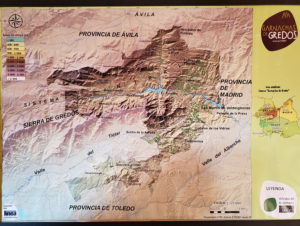 from, and how these two college friends managed to create a portfolio of Spanish Grenache that I often compare to the wines of Chateau Rayas–I’m not kidding. It all started to make sense when I realized that the two of them were huge fans of Rayas, but what didn’t make sense was how they managed to accomplish it. I knew I would have to be on the ground in Sierra de Gredos to understand it for myself. from, and how these two college friends managed to create a portfolio of Spanish Grenache that I often compare to the wines of Chateau Rayas–I’m not kidding. It all started to make sense when I realized that the two of them were huge fans of Rayas, but what didn’t make sense was how they managed to accomplish it. I knew I would have to be on the ground in Sierra de Gredos to understand it for myself.
First and foremost, it bears mentioning that the drive through Sierra de Gredos to meet them was like something out of a fast car chase in an old James Bond movie. We descended the winding roads of the Gredos mountains into the north valley, where we met Fernando Garcia, and set out to tour their collection of “cooler” climate vineyards. You see, having started their project in the south valley, Fernando and Dani soon realized that in the warmer years, it was becoming very difficult to achieve the style of Garnacha that they desired. Their motto, which was repeated to me throughout the day, is “minerality, freshness and elegance.” If they can’t obtain this, then they begin to look elsewhere for locations that can.
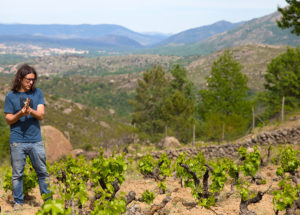 This is how they found themselves both purchasing and renting plots in the north valley. Two of them are already bearing excellent fruit: the remarkably desolate and fearfully steep Tumba del Rey Moro and the visually stunning Rumbo del Norte. This is how they found themselves both purchasing and renting plots in the north valley. Two of them are already bearing excellent fruit: the remarkably desolate and fearfully steep Tumba del Rey Moro and the visually stunning Rumbo del Norte.
In what was one of the most challenging vineyard hikes of my life, we climbed the natural terraces of Tumba del Rey Moro. It brought back memories of the first Pet Cemetery movie, as Louis Creed struggled to climb his way to the ancient Indian burial ground, except here, it was the tomb of a Moorish king that gives the vineyard its name. To make the story even more interesting, Fernando and Dani found this location through satellite photos and had to literally cut a path through thickets and shrubbery which resembled something from a desert, or a scene from an alien world.
Why someone chose this location is a mystery, as only a thin layer of dusty soil covers the hard granite that these vines have struggled to survive in 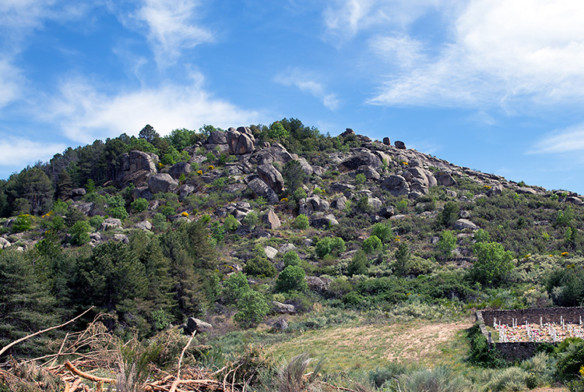 over the last 120 years. Many had died over that time, but the strong survived and are today producing one of Commando G’s most ethereal wines. The fact is that Fernando and Dani don’t trust anyone else to even tend these vines, and so they do all of the work themselves, and by hand. When you consider this, the $100 price tag per bottle of Tumba del Rey Moro begins to make a lot more sense. It was a once-in-a-lifetime experience, to say the least. over the last 120 years. Many had died over that time, but the strong survived and are today producing one of Commando G’s most ethereal wines. The fact is that Fernando and Dani don’t trust anyone else to even tend these vines, and so they do all of the work themselves, and by hand. When you consider this, the $100 price tag per bottle of Tumba del Rey Moro begins to make a lot more sense. It was a once-in-a-lifetime experience, to say the least.
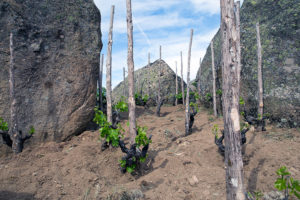 Moving on to Rumbo al Norte, a vineyard that has already produced a 100-point vintage wine for Comando G, the landscape changed quickly, even if the drive was relatively quick between the two locations. Here we found a sandy layer of decomposed granite over mountainous rock, yet the most stunning aspect of this vineyard was the giant boulders found throughout, left by glaciers as they tore through the landscape tens of thousands of years ago. Fernando guided us over to one of the trenches they had dug out with Pedro Parra, and they began to chip away at the layers of soil beneath. This was also eye-opening, as we witnessed a deep underground layer of clay and limestone that was retaining water from rains that took place over twelve days prior. This was a perfect example of the importance of old vines, and how their deep-root systems could find the water and nutrient reserves that the plant needs to produce healthy fruit. Moving on to Rumbo al Norte, a vineyard that has already produced a 100-point vintage wine for Comando G, the landscape changed quickly, even if the drive was relatively quick between the two locations. Here we found a sandy layer of decomposed granite over mountainous rock, yet the most stunning aspect of this vineyard was the giant boulders found throughout, left by glaciers as they tore through the landscape tens of thousands of years ago. Fernando guided us over to one of the trenches they had dug out with Pedro Parra, and they began to chip away at the layers of soil beneath. This was also eye-opening, as we witnessed a deep underground layer of clay and limestone that was retaining water from rains that took place over twelve days prior. This was a perfect example of the importance of old vines, and how their deep-root systems could find the water and nutrient reserves that the plant needs to produce healthy fruit.
From there we headed to the south valley, the home base, and original vineyards of Comando G. While the north valley represented the future of 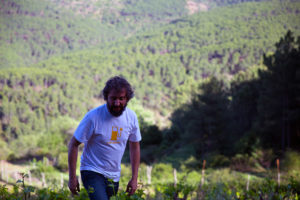 Comando G’s cru bottlings, the south valley represents the core, and creates the wines that I had come to know as their signature style: La Bruja de Rozas, Las Umbrias, and Las Iruelas (produced under the Daniel Landi label). This was also where we met Dani, tending vines in Las Iruelas with the loving care of a father to his own children. Comando G’s cru bottlings, the south valley represents the core, and creates the wines that I had come to know as their signature style: La Bruja de Rozas, Las Umbrias, and Las Iruelas (produced under the Daniel Landi label). This was also where we met Dani, tending vines in Las Iruelas with the loving care of a father to his own children.
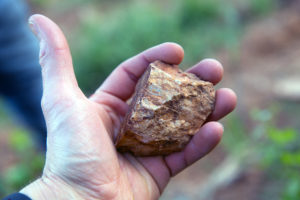 In the south, we found a very different terroir, with elevations around 1000 meters versus 1200 in the north valley, and soils that mix granite with slate, schist, quartz and patches of clay. These days, the higher elevations of Las Iruelas are producing the wine that bears its name. To me, it’s one of the greatest expressions of Garnacha being produced in the world today. In the south, we found a very different terroir, with elevations around 1000 meters versus 1200 in the north valley, and soils that mix granite with slate, schist, quartz and patches of clay. These days, the higher elevations of Las Iruelas are producing the wine that bears its name. To me, it’s one of the greatest expressions of Garnacha being produced in the world today.
Lastly, it was on to Las Umbrias, the benchmark (IMO) expression of Comando G. As if in some kind of real-life fantasy tale, we found ourselves going from touring these old vines and reviewing their motto of “minerality, freshness and elegance,” to witnessing wild horses, friendly enough to approach you, roaming the mountains. What an amazing place Spain can be, with Gredos as one of the locations I eagerly hope to return to one day.
Back at the cellar, we tasted through 2017s and 2018s, from components of their Rozas village and Premier Cru wines, all the way up to Rumbo al 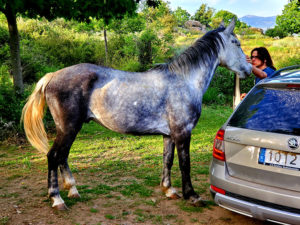 Norte. Here the wines see long macerations, foot treading, whole-cluster fermentation and aging in large neutral casks of various sizes–it’s that simple. It was a remarkable tasting, as the 2017s will be very limited but worth searching for, and the 2018s are, quite frankly, off the charts. Norte. Here the wines see long macerations, foot treading, whole-cluster fermentation and aging in large neutral casks of various sizes–it’s that simple. It was a remarkable tasting, as the 2017s will be very limited but worth searching for, and the 2018s are, quite frankly, off the charts.
In the end, not only did I leave feeling wholly satisfied that Comando G is the future of Spanish Garnacha, but also that is owned and operated by some of the best people you could ever hope to meet. Fernando and Dani immediately seem like long-lost friends that you happen upon and pick up right where you left off. I remember Luis Gutierrez commenting that the two of them seemed to have a little bit of Peter Pan built into their DNA, and I couldn’t agree more. Some people take energy, some people are neutral, and others give without asking in return. Fernando and Dani are of the latter, and they also happen to make some of the best wine I’ve ever had the pleasure of tasting.
Dominio del Águila
I’ve written about them many times before, and I’m sure I will write about them many more. Dominio del Aguila has created something special and 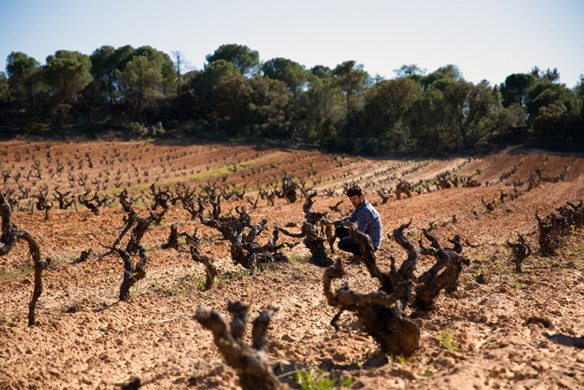 unique in Ribera del Duero, and the chatter about them being one of Spain’s greatest wineries is valid. Jorge Monzon started small but smartly, studying the vines around his home town and slowly purchasing choice vineyards. The entire time he worked at Vega Sicilia, and he would sell the fruit of his own vineyards to many of the region’s leading wineries. By 2010, he was ready to set out on his own, along with the help of his wife, Isabel. Today, Dominio del Aguila maintains 66 hectares around the town of Aguilera and continues to explore, in search of new plots that will be added to their lineup. unique in Ribera del Duero, and the chatter about them being one of Spain’s greatest wineries is valid. Jorge Monzon started small but smartly, studying the vines around his home town and slowly purchasing choice vineyards. The entire time he worked at Vega Sicilia, and he would sell the fruit of his own vineyards to many of the region’s leading wineries. By 2010, he was ready to set out on his own, along with the help of his wife, Isabel. Today, Dominio del Aguila maintains 66 hectares around the town of Aguilera and continues to explore, in search of new plots that will be added to their lineup.
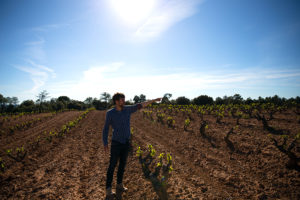 Touring the vineyards with Jorge was eye-opening, as we raced across the countryside in their pickup truck, stopping 6, 7, 8 (I literally lost count) times to jump out and explore another terroir that the winery works with. We saw it all; high elevations, vines from 100-150 years old, soils that spanned clay, sand, limestone, and rock. What was amazing to me was a point when I asked about a vineyard that resembled Chateauneuf du Pape, with its diverse mix of rounded stones blanketing the soils. Jorge informed me that at one time, this vineyard at 1100 meters was a beach, and all the surrounding valleys were part of a vast sea. I snapped picture after picture in pure disbelief. This is the new frontier of winemaking in Ribera del Duero. Touring the vineyards with Jorge was eye-opening, as we raced across the countryside in their pickup truck, stopping 6, 7, 8 (I literally lost count) times to jump out and explore another terroir that the winery works with. We saw it all; high elevations, vines from 100-150 years old, soils that spanned clay, sand, limestone, and rock. What was amazing to me was a point when I asked about a vineyard that resembled Chateauneuf du Pape, with its diverse mix of rounded stones blanketing the soils. Jorge informed me that at one time, this vineyard at 1100 meters was a beach, and all the surrounding valleys were part of a vast sea. I snapped picture after picture in pure disbelief. This is the new frontier of winemaking in Ribera del Duero.
From there, we went back to the winery to taste, which is just a small footprint in the town of La Aguilera, yet houses barrel after barrel of pure magic. 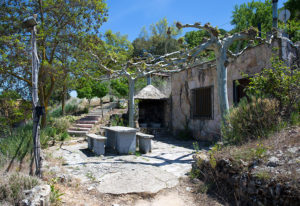 As we descended the stairs into their cellars, which were constructed as far back as the 15th century, we stopped along the way to sample barrels of the upcoming 2017 and 2018 vintages. As we descended the stairs into their cellars, which were constructed as far back as the 15th century, we stopped along the way to sample barrels of the upcoming 2017 and 2018 vintages.
While 2017 was an incredibly small vintage heavily affected by hail, the wines are magnificent. It will be scary to see how small allocations will be upon release, but one thing I can assure you is that it will be worth the hunt. The 2017s possess a depth and nervous energy that excites the senses and pulls you toward the glass. As for 2018, we will all be revelling in their beauty, balance and longevity. 2018 will be a vintage that will thrill us with its combination of cool-toned fruit, vibrancy and dusty fine tannins. I’m very happy to be able to provide my tasting notes below.
Once the tasting was done, we headed to Aranda de Duero for dinner at El Lagar de Isilla. Here we were treated to a selection of regional specialties 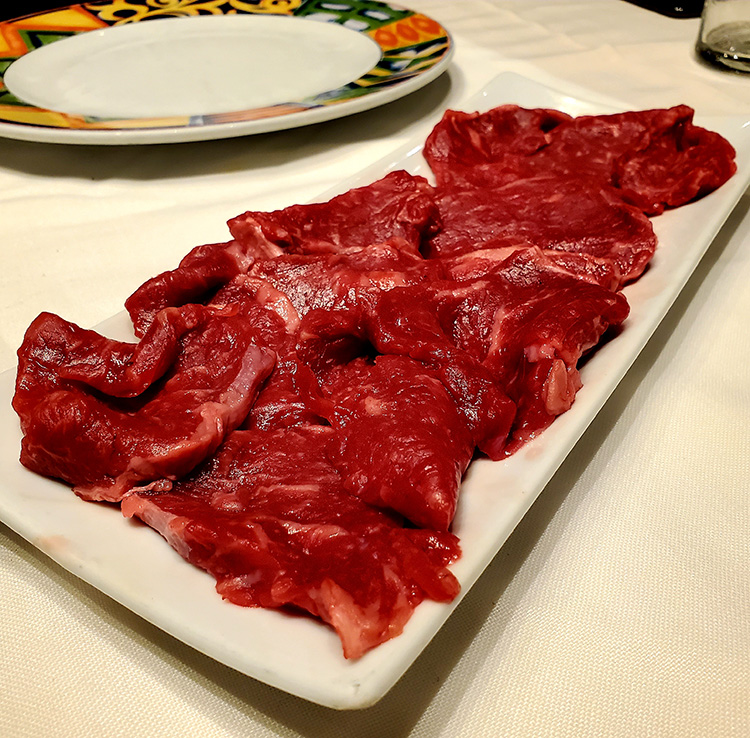 paired with current vintages of Dominio del Aguila. It was a long and hard day, and we ate heartily as a result. Chatting with Jorge about the past, present and future of the region, I was humbled by how much this man cares not only about the destiny of Ribera, but also about the health and happiness of his home town and everyone within it. Passion fills this man, as his perfectionist persona and inquisitive nature drives him–it’s an amazing combination. paired with current vintages of Dominio del Aguila. It was a long and hard day, and we ate heartily as a result. Chatting with Jorge about the past, present and future of the region, I was humbled by how much this man cares not only about the destiny of Ribera, but also about the health and happiness of his home town and everyone within it. Passion fills this man, as his perfectionist persona and inquisitive nature drives him–it’s an amazing combination.
On to the wines:
Dominio del Aguila Reserva 2018 – (Tasted from barrel) The nose showed vibrant dark fruits, minerals, and exotic florals, yet cool-toned and lifted. On the palate, I found saturating red berry and wild berry fruits, spices, and balancing acids that created a vibrant and fresh expression. A mix of saturating wild berry fruits and minerals lasted long on the finish, with a tug of fine tannin. (94-95 points)
Dominio del Aguila Penas Aladas Gran Riserva 2018 – (Tasted from barrel) Here I found a display of deep, dark berry fruits, with crushed stone 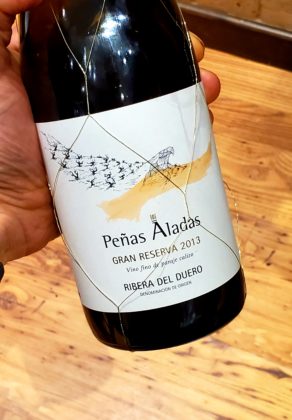 and savory herbs versus sweet blue florals and hints of animal musk. On the palate, intense black fruits flooded the senses, ripe yet perfectly balanced by brisk, energizing acidity, as the fruit became fresher, giving way to strawberries and cherries. The long, structured finish seemed to just go on and on and on, resonating on a mix of dark fruits, minerals and inner florals. (96-98 points) and savory herbs versus sweet blue florals and hints of animal musk. On the palate, intense black fruits flooded the senses, ripe yet perfectly balanced by brisk, energizing acidity, as the fruit became fresher, giving way to strawberries and cherries. The long, structured finish seemed to just go on and on and on, resonating on a mix of dark fruits, minerals and inner florals. (96-98 points)
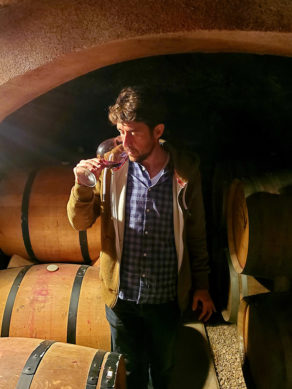 Dominio del Aguila Canta la Perdiz 2018 – (Tasted from barrel) The nose showed fresh red berries, with smoky minerals and sweet dark florals. On the palate, I found a silky and pliant expression, with energizing acidity contrasting its sappy dark fruits and spice. Dusty tannins defined the long finish with staying minerality and dark wild berry fruits. (94-95 points) Dominio del Aguila Canta la Perdiz 2018 – (Tasted from barrel) The nose showed fresh red berries, with smoky minerals and sweet dark florals. On the palate, I found a silky and pliant expression, with energizing acidity contrasting its sappy dark fruits and spice. Dusty tannins defined the long finish with staying minerality and dark wild berry fruits. (94-95 points)
Dominio del Aguila Canta la Perdiz 2017 – (Tasted from barrel) At first, the 2017 Canta la Perdiz was holding back a bit, needing time in the glass to blossom, but once it did, I was greeted to a gorgeous mix of black cherry, with dried floral tones, dusty minerality, and savory exotic spices. On the palate, I found velvety depths of dark mineral-infused black fruits and inner florals with balancing acids and savory herbal tones. This finish was long with staining red fruits, drying tannins, dusty spice and lingering florals. 2017 may have been a difficult vintage here, but the wines are gorgeous. (95-97 points)
Dominio del Aguila Reserva 2017 – (Tasted from barrel) Here I found an intensely perfumed expression of tart red fruits, with zesty bright florals, hints of orange and savory spice. On the palate, velvety textures flooded the senses, ushering in cool-toned dark red and blue fruits, as well as sweet spice, showing amazing energy and muscle throughout. The finish was long, spicy and structured with saturating perfumed red fruits and lasting minerality. Wow, this is a vintage we will not want to miss. (95-97 points)
Dominio del Aguila Pena Aladas Gran Riserva 2017 – (Tasted from barrel) The ‘17 Pene Alades shows a good amount of reduction at this stage, 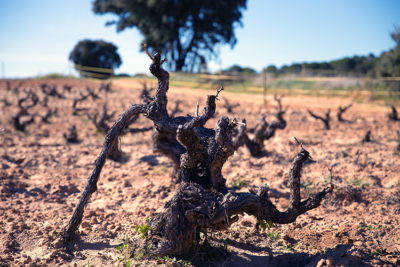 yet looking past it, I found a bouquet full of spicy wild berry fruits, savory herbs, dried flowers, and crushed stone. On the palate, silky textures, lifted by fresh acidity, ushered in fresh red fruits, with sweet spice and hints of lavender. The long finish echoed with spicy red and blue fruits, slowly fading to reveal long-lasting, dusty tannins. (94-96 points) yet looking past it, I found a bouquet full of spicy wild berry fruits, savory herbs, dried flowers, and crushed stone. On the palate, silky textures, lifted by fresh acidity, ushered in fresh red fruits, with sweet spice and hints of lavender. The long finish echoed with spicy red and blue fruits, slowly fading to reveal long-lasting, dusty tannins. (94-96 points)
Dominio del Aguila Reserva 2016 – (Tasted from barrel) The nose was dark, savory and rich, showing mineral-drenched red and blue fruits, with notes of smoke, lavender, and moist earth. On the palate, I found silky textures, firmed up by grippy tannin, yet also energetic through its vibrant acidity. Dark fruits, minerals, and savory herbs flooded the senses, giving way to a long and structured finish, resonating on sappy, intense, saturating red fruits. With time in the cellar, I could see the 2016 maturing into a truly epic wine. Wow! (96-97 points)
Credits and Resources
Article, tasting notes and photos by Eric Guido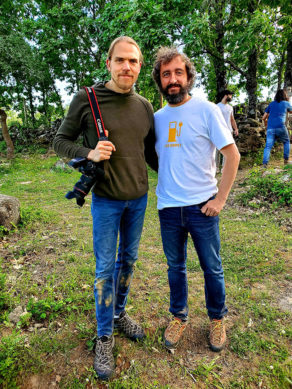
Visit the official website of Dominio del Aguila
Visit the official website of Comando G
A special thank you to IPO Wines for guiding us on the journey
Find the wines of Daniel Landi at Morrell Wine
Find the wines of Dominio del Aguila at Morrell Wine |